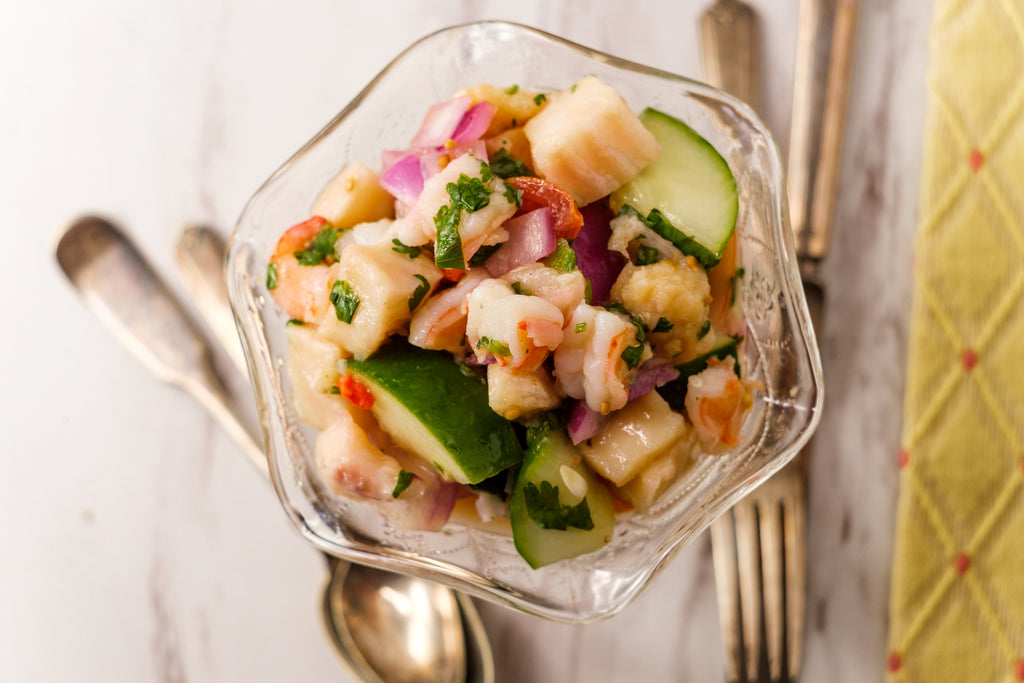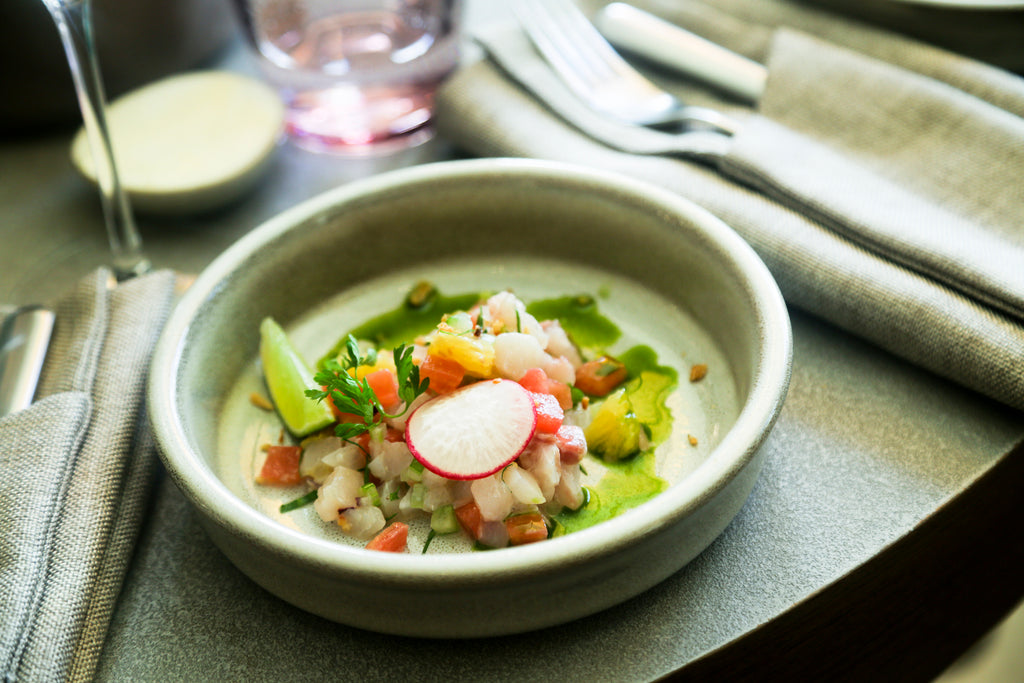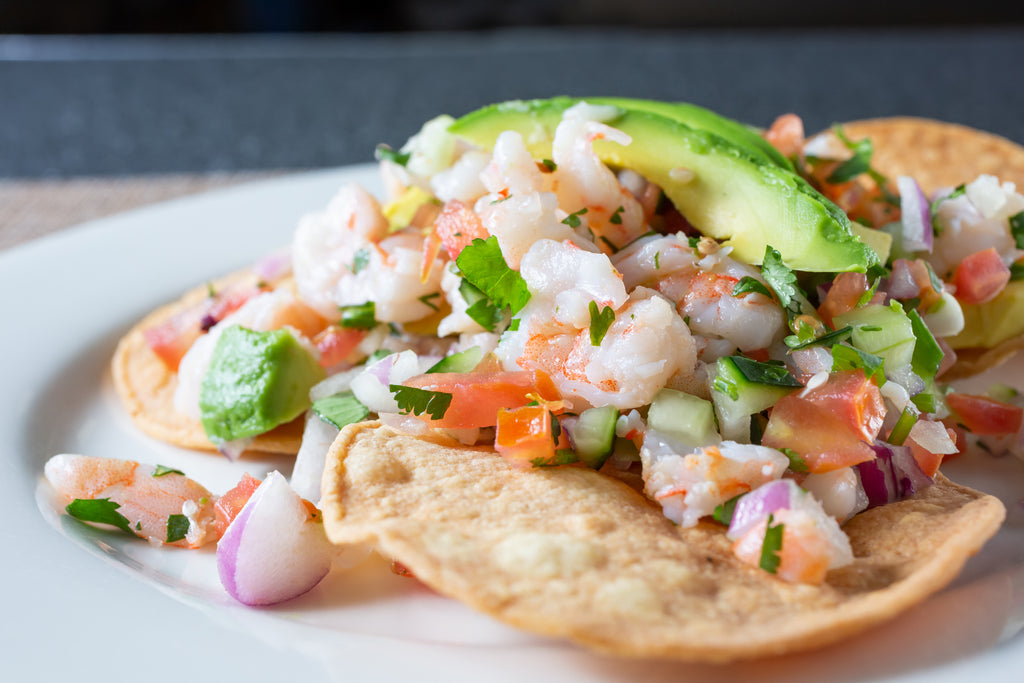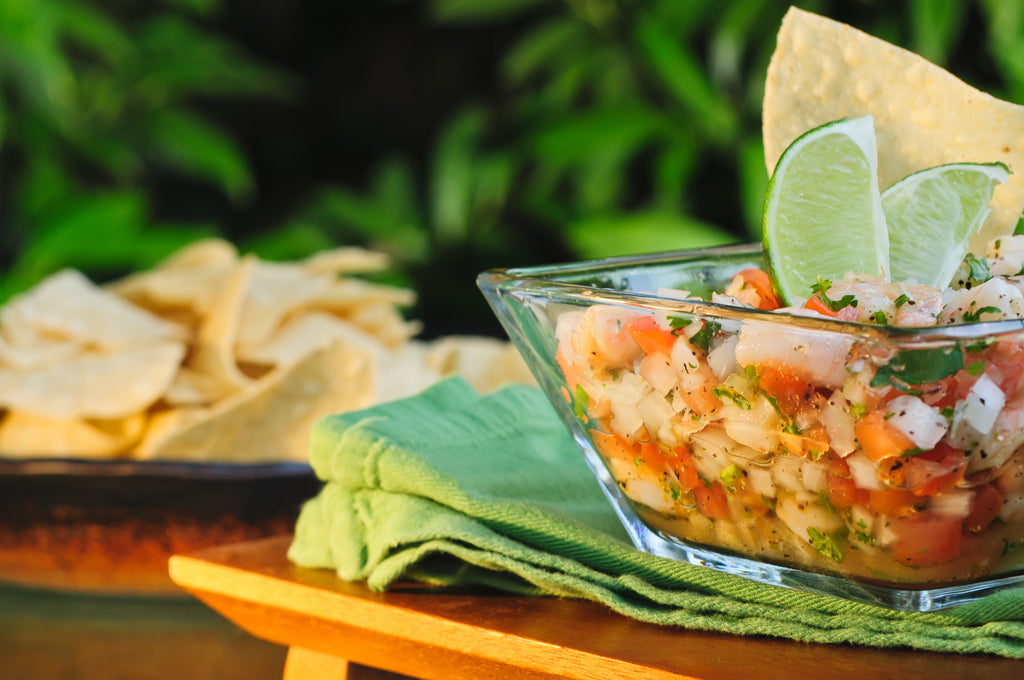Recipe: Snapper Ceviche
Ceviche, a popular dish originating from the coastal regions of Latin America, has captured the hearts and palates of food enthusiasts around the world. Ceviche's irresistible combination of freshness, flavour, and healthiness has propelled its popularity beyond Latin America. It has become a staple in the culinary scenes of major cities worldwide, with renowned chefs putting their own unique spins on the dish. In this blog, we delve into the origins, preparation, and diverse variations of this refreshing seafood dish.
Ingredients:
- 600g skinless, boneless, fresh snapper, cut into 1/2 cm cubes
- 1/2 cup lime juice
- 1/2 cup lemon juice
- 1 birdseye chilli, seeds removed, finely chopped
- 1/2 cup red capsicum, finely diced
- 1 avocado, diced
- 1/2 small red onion, diced
- 1 clove garlic, crushed
- 1/4 cup coriander, roughly chopped
- 1 tablespoon extra-virgin olive oil
- Salt to taste
Method:
- Combine snapper, chilli, red capsicum, mango and garlic in a large bowl.
- Add lime and lemon juice. Toss well and season with salt.
- Please in an airtight container and refrigerate for 20 minutes.
- Remove from fridge. Stir in coriander and oil.
- Serve immediately. This recipe pairs well with fresh corn chips and a cold beer.

Origins and Cultural Significance
The exact origins of ceviche may be debatable, but its undeniable birthplace lies in South America. This refreshing seafood dish has been embraced as a staple in all Latin American countries, each offering its own unique take on its preparation and flavours. This dish holds immense cultural significance and has been passed down through generations. While it is widely believed that the Incas of Peru or Ecuador first employed this method on raw fish, the popularity of ceviche has since spread far and wide, captivating the palates of food enthusiasts around the world.

What is Ceviche?
At its core, ceviche is a dish made of fresh, cubed raw fish or shellfish, marinated or "cooked" in an abundant amount of citrus juice. Although ceviche isn't cooked conventionally with heat, the transformative power of the acid from citrus juice, known as denaturation, causes the proteins in the fish to undergo a similar change as if they were cooked. The fish is typically diced into bite-sized pieces and left to marinate for a short time, usually 15 to 30 minutes, depending on the desired level of "cooking." The acidity of the citrus juice not only enhances the flavour but also acts as a natural preservative.

Flavour Explosion and Diverse Variations
Ceviche offers a burst of refreshing flavours, combining the natural sweetness of seafood with the tanginess of citrus juices. The delicate balance of flavours is often enhanced by the addition of ingredients such as red onions, cilantro, tomatoes, avocado, and chili peppers. Each country and region puts its own twist on the traditional ceviche, resulting in a variety of unique flavour profiles.
In Peru, for example, ceviche is typically served with corn, sweet potato, and aji amarillo, a Peruvian yellow chili pepper. Mexican ceviche, known as "ceviche de camarón," often incorporates shrimp, tomatoes, cucumbers, and cilantro.
Ecuadorian ceviche may include the addition of tomato sauce and is typically served with popcorn or plantain chips. These variations reflect the rich diversity of Latin American cuisine and the creativity of local chefs and home cooks.
When making ceviche, selecting the right fish or shellfish is crucial. Regardless of your choice, ensure the fish is fresh, and possesses firm, translucent flesh. Look for the enticing aroma of the ocean without any off-putting fishy odours. Fish like Kingfish, Sole, Sea Bass, Mahi and Flounder are all perfect for ceviche. As are green prawns, scampi or scallop meat.
We however love using snapper! When it comes to raw or marinated seafood preparations like ceviche, snapper stands out as an excellent choice. Snapper, known for its delicate texture and mild, sweet flavour, lends itself perfectly to the vibrant and refreshing flavours of ceviche. There are different varieties of snapper available, including Red Snapper, Yellowtail Snapper, and Mangrove Snapper, each offering its own unique qualities.

Ceviche Food Safety Tips
- Embrace Freshness: Always opt for the freshest fish possible when preparing ceviche. The quality of the fish directly impacts the overall taste and safety of the dish.
- Same-Day Preparation: Purchase the fish on the same day you plan to make ceviche. This ensures optimal freshness and minimizes the risk of bacterial growth.
- Proper Storage: Before making ceviche, store the fish in a tightly sealed container in the coldest part of your refrigerator.
- Freshly Squeezed Citrus Juice: While bottled lemon and lime juice can be used for ceviche, the best results come from using freshly squeezed juice. The vibrant flavours and acidity of freshly squeezed lemons and limes elevate the dish and contribute to it’s freshness.
- Prompt Refrigeration: After enjoying your ceviche, promptly refrigerate any leftovers in a container with a secure lid. Consume within 1 to 2 days, discarding if any unusual odours develop.
Whether enjoyed on a sunny beach or in a bustling urban setting, ceviche continues to delight and tantalize taste buds with its perfect blend of freshness and flavour. We hope you enjoy this beautiful snapper ceviche recipe!

We love seeing the delicious creations that our audience come up with! Share your versions of this recipe on social media and don't forget to tag us @dawsonsoysters.

